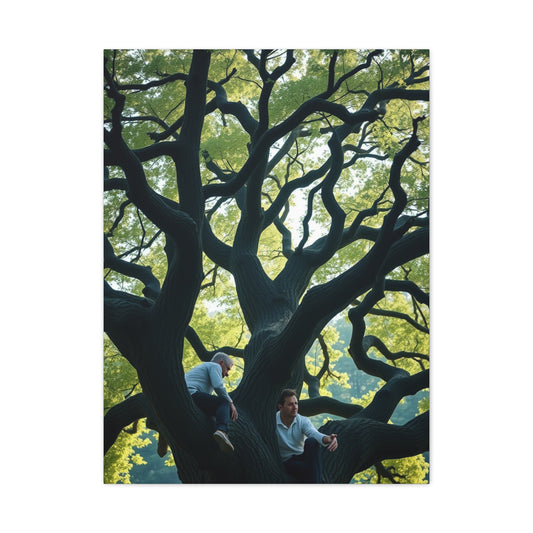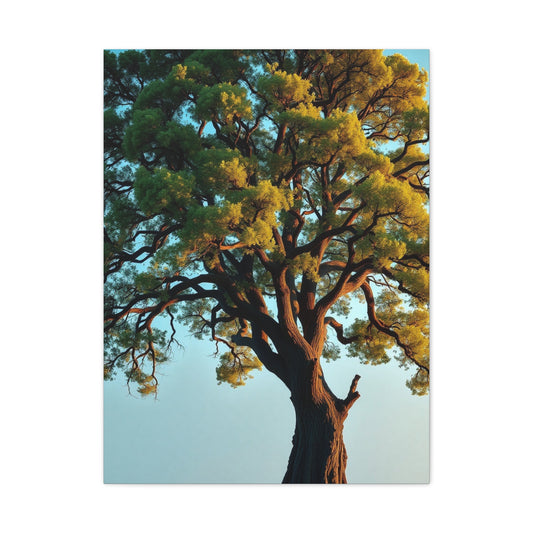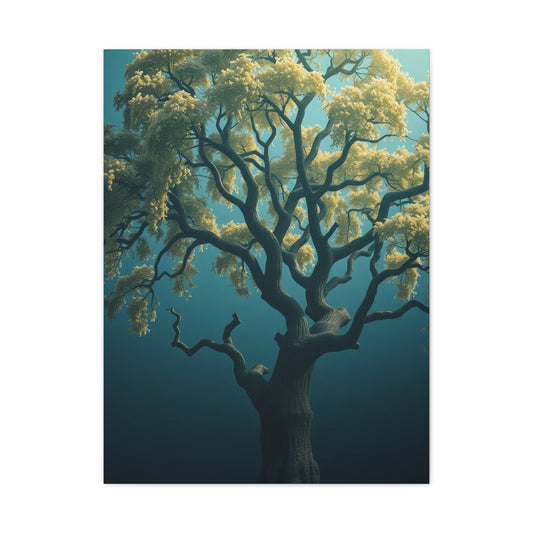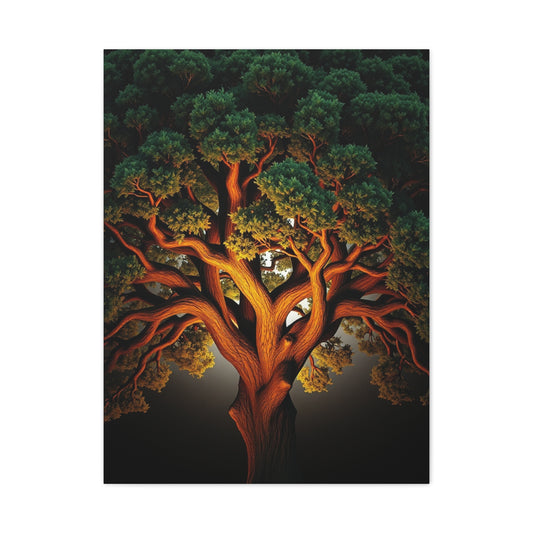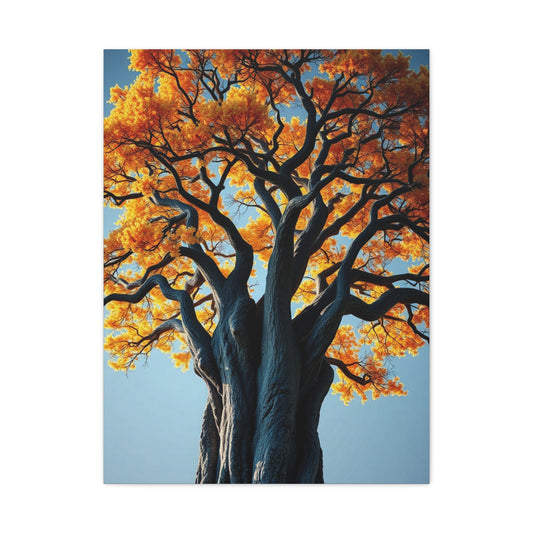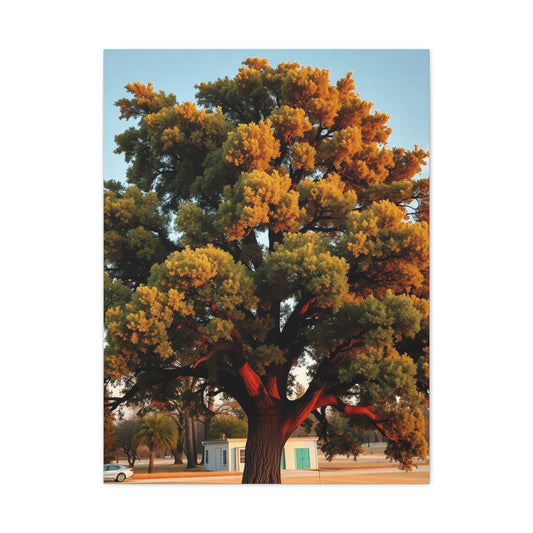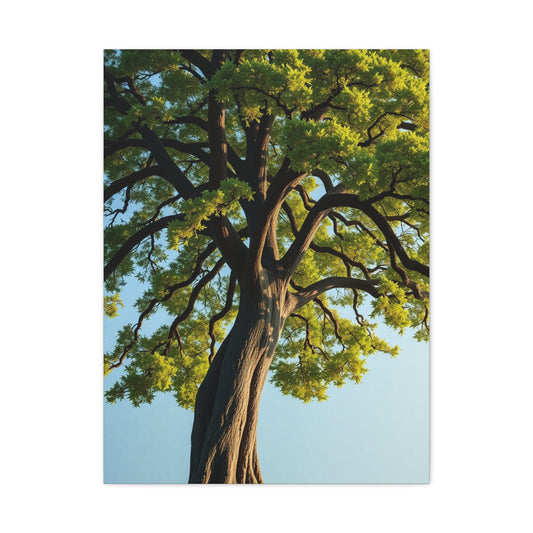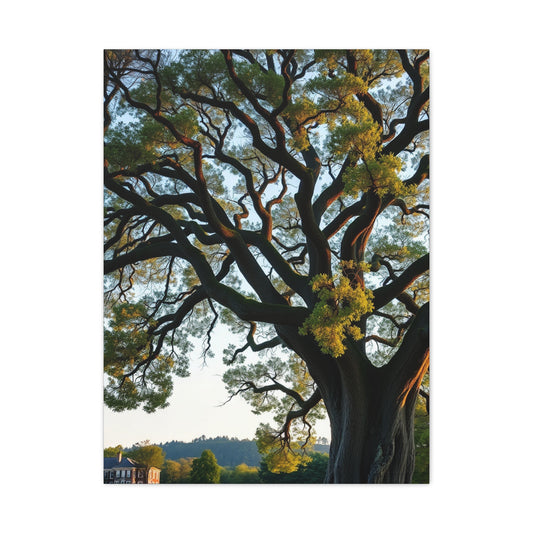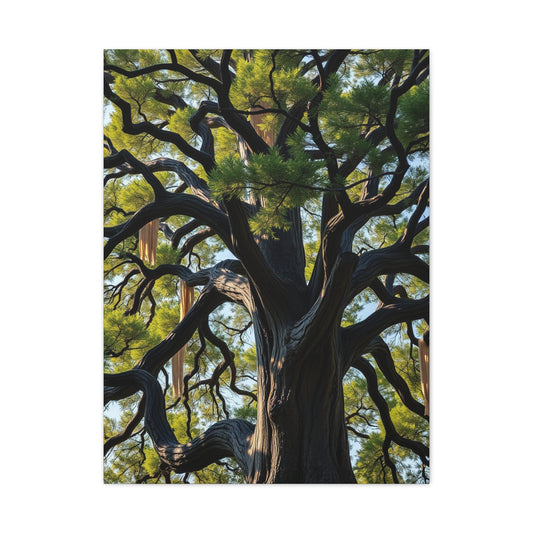Embrace the Timeless Majesty of Oak Tree Wall Art in Your Home
Oak trees have stood as symbols of strength, wisdom, and endurance throughout human history. Their majestic presence in forests and landscapes has inspired countless artists, designers, and homeowners to incorporate their beauty into interior spaces through wall art. This comprehensive guide explores the transformative power of oak tree wall art and how it can bring the serenity and grandeur of nature directly into your living spaces.
The appeal of oak tree wall art extends far beyond simple decoration. These pieces serve as windows to the natural world, offering a connection to the outdoors that modern life often lacks. Whether you live in a bustling city apartment or a suburban home, oak tree wall art can create an immediate sense of tranquility and grounding that transforms any room into a peaceful retreat.
When considering oak tree wall art for your home, understanding the various styles, sizes, and placement options becomes crucial for creating the desired atmosphere. From realistic photographic prints that capture every detail of bark texture and leaf patterns to abstract interpretations that suggest the essence of oak trees through color and form, the options are virtually limitless.
The versatility of oak tree wall art makes it suitable for every room in your home. Living rooms benefit from large statement pieces that create focal points and conversation starters. Bedrooms find peace in gentle, muted oak tree scenes that promote relaxation and restful sleep. Kitchens and dining areas can embrace the natural abundance that oak trees represent, while home offices gain inspiration from the steadfast presence these mighty trees embody.
Bringing the Essence of Nature Through Oak Tree Wall Decor
The desire to connect with nature has never been stronger in our increasingly digital world. Oak tree wall art serves as a bridge between indoor living spaces and the natural environment, creating spaces that feel alive, breathing, and connected to the earth. This connection goes beyond mere aesthetics; it touches something fundamental in human nature that craves the presence of the natural world.
Oak trees, in particular, carry deep symbolic meaning that resonates with people across cultures and generations. Their robust trunks speak of stability and reliability, while their sprawling branches suggest growth, expansion, and the reaching toward new possibilities. Their deep root systems remind us of the importance of strong foundations, whether in our homes, relationships, or personal growth.
The psychological benefits of incorporating nature-inspired art into living spaces have been well-documented. Oak tree wall art can reduce stress levels, improve mood, and create a sense of calm that permeates throughout the home. The organic shapes and natural colors found in oak tree art provide a counterbalance to the straight lines and artificial materials that dominate modern architecture and design.
Different artistic interpretations of oak trees offer various emotional and aesthetic experiences. Realistic portrayals bring the authentic beauty of actual oak trees into your space, complete with the intricate details that make each tree unique. These pieces often feature the weathered bark, twisted branches, and seasonal changes that tell the story of a tree's life and endurance through changing conditions.
More abstract interpretations allow for creative expression while maintaining the essential spirit of oak trees. These pieces might use bold colors not found in nature, simplified forms that capture the essence rather than the details, or mixed media approaches that add texture and depth to the artwork. Such pieces can serve as striking focal points while still maintaining the calming presence that oak tree imagery provides.
The seasonal aspects of oak trees offer particularly rich artistic possibilities. Spring oak trees burst with fresh green leaves and delicate flowers, symbolizing new beginnings and renewal. Summer oaks display their full, lush canopies, representing abundance and protection. Autumn brings the spectacular color changes that make oak trees among the most beloved trees for fall displays. Winter oaks, with their bare branches creating intricate silhouettes against the sky, speak of endurance and the beauty found in simplicity.
Oak Tree Art for Contemporary Living
Modern interior design trends increasingly favor clean lines, uncluttered spaces, and carefully chosen decorative elements that serve both aesthetic and functional purposes. Minimalist oak tree art fits perfectly into this design philosophy, offering the calming presence of nature without overwhelming contemporary spaces with excessive detail or busy compositions.
The beauty of minimalist oak tree art lies in its ability to suggest the majesty and presence of these magnificent trees through simplified forms and reduced color palettes. A single oak tree silhouette against a neutral background can be more powerful than a highly detailed landscape, drawing the viewer's attention to the essential form and spirit of the tree rather than getting lost in surface details.
Color choices in minimalist oak tree art tend toward neutral tones that complement modern interior design schemes. Black and white compositions offer timeless elegance and versatility, working equally well with bold accent colors or maintaining the serene simplicity of monochromatic spaces. Subtle earth tones like warm grays, soft browns, and muted greens provide gentle color without disrupting the calm atmosphere that minimalist design seeks to create.
The composition of minimalist oak tree art emphasizes negative space as much as the tree itself. This approach creates breathing room within the artwork that mirrors the uncluttered aesthetic of contemporary interiors. The empty spaces around the tree form become as important as the tree itself, creating a sense of openness and tranquility that enhances the overall impact of the piece.
Size considerations for minimalist oak tree art depend largely on the intended impact and available wall space. Large-scale minimalist pieces can serve as dramatic focal points in spacious rooms, while smaller works function beautifully in intimate spaces or as part of curated gallery walls. The key is ensuring that the scale of the artwork complements rather than overwhelms the proportions of the room.
Framing choices for minimalist oak tree art should support the clean, uncluttered aesthetic of both the artwork and the surrounding space. Simple, streamlined frames in neutral colors or natural materials like light woods work well, while floating frames can create the illusion that the artwork is suspended within its own space. In some cases, frameless mounting systems allow the artwork to integrate seamlessly with the wall surface.
Lighting plays a crucial role in displaying minimalist oak tree art effectively. Natural light enhances the organic qualities of the subject matter, while carefully positioned artificial lighting can create dramatic effects and highlight the subtle details within simplified compositions. The goal is to illuminate the artwork without creating glare or shadows that might detract from its peaceful presence.
Celebrating the Majesty of Oak Trees in Traditional Wall Art
Traditional oak tree wall art embraces the full grandeur and detail of these magnificent trees, creating pieces that celebrate their complexity, beauty, and symbolic significance. Unlike minimalist approaches, traditional oak tree art revels in rich details, realistic colors, and compositions that capture the full presence of these natural giants.
The appeal of traditional oak tree wall art lies in its ability to transport viewers directly into natural settings. These pieces often feature oak trees in their full environmental context, surrounded by other vegetation, wildlife, and landscape elements that create complete scenes rather than isolated subjects. The result is artwork that functions almost like windows, offering views into peaceful natural spaces that extend beyond the physical boundaries of interior rooms.
Detailed bark textures form a crucial element in traditional oak tree art. The deeply furrowed, distinctive bark of mature oak trees tells stories of age, weathering, and resilience. Artists who specialize in traditional oak tree wall art often spend considerable time studying and reproducing these textures, understanding that the bark's character contributes significantly to the overall impact and authenticity of the piece.
Branch structure and leaf detail receive equally careful attention in traditional oak tree wall art. The complex branching patterns of oak trees create intricate silhouettes and internal compositions that reward close viewing. Each branch tells part of the tree's story, showing how it has grown and adapted to its environment over decades or centuries of life.
Seasonal variations provide rich opportunities for traditional oak tree wall art. Spring compositions might feature the fresh green of new leaves and the delicate flowers that many people don't realize oak trees produce. Summer scenes showcase the full, dense canopies that provide shelter and shade, often populated with wildlife that depends on oak trees for habitat and food.
Autumn oak tree art represents perhaps the most popular seasonal variation, capturing the spectacular color displays that make oak trees among the most celebrated trees for fall foliage. The rich golds, deep oranges, and warm browns of autumn oak leaves create natural color schemes that complement a wide range of interior design styles and seasonal decorating themes.
Winter oak tree art focuses on the architectural beauty of bare branches against sky and snow. These compositions emphasize the structural elegance of oak trees, showing the graceful curves and powerful presence that remain visible when leaves no longer obscure the basic form. Winter scenes often convey a sense of peaceful solitude and quiet strength.
Changes Through Oak Tree Wall Art
The cyclical nature of oak trees through the seasons provides endless inspiration for wall art that can either celebrate a particular time of year or create dynamic displays that change with the calendar. Seasonal oak tree wall art allows homeowners to bring the natural rhythm of the year into their living spaces, creating connections to the world outside that enhance the sense of being part of natural cycles.
Spring oak tree art captures the renewal and fresh energy of the growing season. Young leaves unfurl in delicate shades of green, often with a translucent quality that allows light to filter through and create luminous effects. Spring oak flowers, though small and often overlooked in nature, can become delicate details that add interest and authenticity to artistic interpretations.
The emotional impact of spring oak tree art centers on themes of new beginnings, growth, and optimism. These pieces work particularly well in spaces where fresh energy is desired, such as home offices, study areas, or bedrooms where the symbolism of renewal can provide daily inspiration. The light, fresh colors typical of spring oak art complement interior design schemes that emphasize brightness and openness.
Summer oak tree art celebrates the full maturity and abundance of these magnificent trees. Dense canopies provide shelter and create cathedral-like spaces beneath spreading branches. The deep green colors of summer foliage create rich, saturated compositions that bring vitality and life to interior spaces. Wildlife often appears in summer oak tree art, from birds nesting in branches to squirrels gathering acorns, adding movement and life to static compositions.
The psychological effects of summer oak tree art relate to feelings of abundance, protection, and stability. These pieces work beautifully in family gathering spaces where the themes of shelter and nurturing resonate with the room's function. The rich colors and full compositions of summer oak art can anchor design schemes and provide visual weight in large or sparsely furnished rooms.
Autumn oak tree art represents the peak of seasonal color and drama. The transformation of oak leaves from green to gold, orange, and brown creates natural fireworks that translate beautifully into wall art. The warm colors of autumn oak art complement cozy interior design schemes and create welcoming atmospheres in entryways, living rooms, and dining areas.
Beyond the obvious color appeal, autumn oak tree art carries deeper symbolic meanings related to maturity, wisdom, and the beauty of change. These themes make autumn oak art particularly suitable for meditation spaces, libraries, or other areas where contemplation and reflection are encouraged.
Winter oak tree art strips away the distractions of foliage to reveal the fundamental structure and character of oak trees. Bare branches create intricate patterns against winter skies, showing the architectural beauty that lies hidden beneath summer's abundance. Snow-covered branches add textural interest and seasonal specificity to winter oak compositions.
The stark beauty of winter oak tree art appeals to minimalist sensibilities while maintaining connection to natural themes. These pieces work well in contemporary spaces where clean lines and reduced color palettes are preferred, but where complete abstraction from nature would feel too sterile or disconnected.
Abstract Expressions of Oak Tree Beauty
Abstract oak tree wall art offers freedom from literal representation while maintaining the essential spirit and energy of these magnificent trees. This artistic approach allows for creative interpretation, emotional expression, and design flexibility that can complement a wide range of interior styles while still providing the natural connection that draws people to oak tree imagery.
The process of abstracting oak tree forms begins with identifying the essential characteristics that make oak trees recognizable and emotionally resonant. The sturdy, often massive trunk serves as a foundation element that suggests strength and stability even when rendered in non-realistic ways. The branching pattern, with its irregular but purposeful spreading, creates rhythm and movement that translates well into abstract compositions.
Color becomes a powerful tool in abstract oak tree art, freed from the constraints of natural accuracy to serve emotional and aesthetic purposes. Bold, unexpected colors can create dramatic focal points and complement specific interior design schemes. Warm earth tones might suggest the natural habitat of oak trees while working harmoniously with rustic or organic design themes.
Texture plays an equally important role in abstract oak tree art. The rough bark of oak trees inspires textured paint applications, mixed media approaches, and three-dimensional elements that add physical depth and tactile interest to wall art. These textural elements can create visual interest from multiple viewing distances and angles, ensuring that abstract oak tree art remains engaging over time.
Geometric interpretations of oak tree forms offer another approach to abstraction. The organic curves of branches and trunk can be translated into angular, geometric shapes that suggest the original forms while creating entirely contemporary compositions. This approach works particularly well in modern and industrial interior design schemes where organic curves might seem out of place but where the symbolic meaning of oak trees remains relevant.
The emotional impact of abstract oak tree art depends largely on the artistic choices made in color, composition, and style. Energetic, gestural abstractions can bring vitality and movement to spaces, while more contemplative, subtle abstractions create peaceful, meditative atmospheres. The flexibility of abstract approaches means that oak tree wall art can be customized to serve specific emotional and aesthetic functions within interior spaces.
Scale considerations for abstract oak tree art differ from those for realistic representations. Without the constraints of natural proportions, abstract oak tree art can be scaled to serve specific design needs. Massive abstract oak tree murals can transform entire walls, while intimate abstract studies can provide quiet focal points in smaller spaces.
Atmospheres with Oak Tree Wall Art
The inherent qualities of oak trees make them particularly effective subjects for creating calm, peaceful atmospheres within interior spaces. Their association with stability, endurance, and natural wisdom contributes to their ability to bring tranquility to busy lives and cluttered environments. Understanding how to leverage these qualities through wall art selection and placement can transform ordinary rooms into serene retreats.
The psychological mechanisms by which oak tree wall art creates calm atmospheres relate to both conscious and unconscious responses to natural imagery. On a conscious level, viewing oak tree art can trigger memories of peaceful outdoor experiences, time spent in forests, or childhood associations with climbing trees and playing in nature. These positive associations create immediate emotional responses that promote relaxation and stress reduction.
On a deeper level, human beings appear to have an innate affinity for natural imagery that scientists call biophilia. This attraction to living things and natural processes may be hardwired into our psychology, making oak tree wall art inherently soothing and restorative. The organic shapes, natural colors, and growth patterns represented in oak tree art provide visual relief from the artificial environments that dominate modern life.
The specific visual characteristics of oak trees contribute to their calming effects. The substantial trunks suggest stability and permanence, qualities that can help viewers feel grounded and secure. The spreading branch structure creates a sense of shelter and protection, while the overall scale of oak trees reminds us of our place within larger natural systems.
Color selection plays a crucial role in maximizing the calming effects of oak tree wall art. Earth tones such as warm browns, soft greens, and gentle grays create harmonious color schemes that promote relaxation. These colors work well with a variety of interior design styles while maintaining their soothing properties across different lighting conditions and seasonal changes.
Composition choices can enhance or diminish the calming effects of oak tree wall art. Symmetrical compositions often feel more restful than highly dynamic arrangements, while centered subjects create focal points that help organize visual attention. Negative space around oak tree subjects prevents compositions from feeling cluttered or overwhelming, maintaining the peaceful atmosphere that makes these pieces effective for relaxation spaces.
Placement considerations for calming oak tree wall art focus on creating visual rest areas within active environments. In living rooms, oak tree art placed opposite seating areas provides a peaceful focal point for relaxation and conversation. In bedrooms, oak tree art positioned where it can be viewed from the bed creates a calming presence that promotes restful sleep.
Lighting affects the calming properties of oak tree wall art significantly. Harsh, direct lighting can create glare and shadows that disrupt the peaceful presence of the artwork. Soft, diffused lighting enhances the gentle qualities of oak tree subjects while creating the kind of atmospheric lighting that promotes relaxation.
Rustic Charm Through Oak Tree Wall Decor
Rustic interior design celebrates the beauty of natural materials, traditional craftsmanship, and connection to rural or outdoor lifestyles. Oak tree wall art fits naturally into rustic design schemes, providing the perfect blend of natural subject matter and artistic expression that enhances the authentic, grounded feeling that defines rustic decor.
The appeal of rustic oak tree wall art lies in its ability to suggest stories and histories that extend beyond the artwork itself. Rustic-style oak tree pieces often emphasize the weathered, aged qualities of mature trees, showing bark textures, twisted branches, and other signs of time and endurance that resonate with the rustic appreciation for objects that have been shaped by use and experience.
Material choices in rustic oak tree wall art often extend beyond traditional canvas and paint to include reclaimed wood, metal elements, and other materials that reinforce the connection to traditional crafts and natural resources. Wood-burned oak tree images on reclaimed barn wood create authentic rustic pieces that literally incorporate materials from rural environments into the artwork.
Metal elements, such as rusted steel or wrought iron, can be incorporated into mixed-media oak tree wall art that combines the organic subject matter with materials that suggest agricultural or rural industrial themes. These combinations create unique pieces that serve as both art and conversation pieces, telling stories about the relationship between human activity and natural environments.
The color palettes typical of rustic oak tree wall art tend toward earthy, muted tones that complement natural materials and traditional color schemes. Deep browns, forest greens, and warm grays create harmonious compositions that feel authentic and unforced. These colors work particularly well with log homes, cabins, and other structures where natural materials dominate the interior architecture.
Texture becomes particularly important in rustic oak tree wall art, as the tactile qualities of the artwork need to complement the textures found throughout rustic interiors. Rough canvas, visible brushstrokes, and layered paint applications create visual textures that harmonize with stone fireplaces, wooden beams, and other rustic architectural elements.
The sizing and framing of rustic oak tree wall art should complement the substantial, grounded feeling that characterizes rustic design. Large-scale pieces work well in rustic interiors, which often feature open floor plans and high ceilings that can accommodate significant artwork. Frames made from natural materials like rough-hewn wood or wrought iron reinforce the connection to traditional craftsmanship and natural materials.
Placement considerations for rustic oak tree wall art focus on creating focal points that enhance rather than compete with architectural features. Above stone fireplaces, rustic oak tree art creates natural pairings that celebrate both human craftsmanship and natural beauty. In dining areas, large rustic oak tree pieces can anchor seating arrangements while creating warm, welcoming atmospheres for family gatherings.
Monochromatic Oak Tree Photography
Black and white oak tree photography represents one of the most sophisticated and versatile approaches to incorporating oak tree imagery into interior spaces. The elimination of color focuses attention on form, texture, and composition while creating timeless pieces that complement virtually any interior design style or color scheme.
The artistic power of monochromatic oak tree photography lies in its ability to reveal aspects of oak tree beauty that might be overlooked in color images. Without the distraction of seasonal colors or atmospheric effects, viewers can appreciate the pure forms of trunk and branches, the intricate patterns created by bark texture, and the architectural qualities that make oak trees such compelling subjects for artistic interpretation.
Contrast becomes a primary tool in black and white oak tree photography, creating dramatic effects that can transform ordinary scenes into striking artistic statements. The interplay between the dark forms of trunk and branches against lighter backgrounds creates natural drama that draws attention and creates focal points within interior spaces.
The tonal range in high-quality black and white oak tree photography provides subtle gradations that reward close viewing while creating overall impressions that work effectively from greater distances. This dual-distance effectiveness makes monochromatic oak tree photography particularly suitable for spaces where artwork needs to function both as intimate viewing experiences and as elements of larger design compositions.
The versatility of black and white oak tree photography extends to its compatibility with various interior design styles. In modern and contemporary spaces, the clean graphic qualities of monochromatic oak tree images complement minimalist aesthetics while providing the natural elements that keep these spaces from feeling sterile. In traditional interiors, black and white oak tree photography offers classical elegance that enhances formal atmospheres without overwhelming existing decorative elements.
The emotional impact of monochromatic oak tree photography often differs from that of color images, tending toward contemplative and meditative responses rather than the immediate sensory appeal of full-color artwork. This quality makes black and white oak tree photography particularly suitable for spaces dedicated to reflection, study, or quiet activities.
Technical considerations in monochromatic oak tree photography include the quality of tonal reproduction and the choice of paper or printing substrate. Fine art prints on high-quality papers can reproduce the subtle tonal gradations that make monochromatic photography most effective, while metallic or textured substrates can add physical depth and interest to the images.
Framing choices for black and white oak tree photography should support the clean, elegant qualities of the medium. Simple, well-proportioned frames in neutral colors or natural materials work well, while museum-quality matting can provide the visual breathing room that allows monochromatic images to display their full tonal range effectively.
Lighting considerations for black and white oak tree photography focus on achieving even illumination that doesn't create hotspots or shadows on the artwork surface. The subtle tonal gradations in high-quality monochromatic prints can be lost or distorted by inappropriate lighting, making careful attention to illumination crucial for maximum artistic impact.
Symbolic Meanings in Oak Tree Art
Oak trees occupy special places in human culture and mythology, carrying symbolic meanings that span across continents and centuries. Understanding these cultural associations can deepen appreciation for oak tree wall art while informing choices about how and where to incorporate these pieces into interior spaces.
In European traditions, oak trees have long been associated with strength, nobility, and divine protection. The ancient Greeks dedicated oak trees to Zeus, while Celtic druids considered oak groves sacred spaces for worship and learning. These associations with divine power and wisdom make oak tree wall art particularly appropriate for spaces dedicated to contemplation, study, or spiritual practice.
The symbolism of endurance and longevity comes from the remarkable lifespans of oak trees, many of which can live for hundreds or even thousands of years. This association makes oak tree wall art meaningful for commemorating important life events, celebrating anniversaries, or creating family gathering spaces where the themes of continuity and tradition are relevant.
American cultural traditions have embraced oak trees as symbols of independence and resilience. The famous Charter Oak of Connecticut and the numerous "Liberty Trees" that served as meeting places during the American Revolution established oak trees as symbols of freedom and democratic values. This symbolism can inform the placement of oak tree wall art in home offices, libraries, or other spaces where these values are celebrated.
Different species of oak trees carry specific cultural meanings that can inform artistic choices. The English Oak represents stability and tradition, while the White Oak symbolizes purity and new beginnings. The Live Oak, with its distinctive horizontal branching pattern, represents hospitality and welcome in Southern American traditions. Understanding these specific associations can help in selecting oak tree wall art that carries personal or cultural significance.
Seasonal representations of oak trees carry their own symbolic meanings. Spring oak imagery represents renewal and new growth, making it appropriate for nurseries, bedrooms, or spaces associated with new beginnings. Summer oak art symbolizes abundance and protection, while autumn oak imagery represents maturity and wisdom. Winter oak art suggests endurance and the ability to find beauty in difficult circumstances.
The wildlife often associated with oak trees adds additional layers of symbolic meaning to oak tree wall art. Squirrels represent preparation and thrift, while owls symbolize wisdom and knowledge. Birds nesting in oak branches suggest home, security, and family bonds. Understanding these symbolic relationships can inform choices about oak tree art that includes wildlife elements.
Contemporary interpretations of oak tree symbolism might focus on environmental themes, sustainability, and the relationship between human activity and natural systems. Oak tree wall art that incorporates these themes can serve as reminders of environmental responsibility while maintaining the aesthetic and emotional benefits of nature-inspired art.
Harmonizing Oak Tree Art with Earth-Toned Interior Design
Earth-toned interior design schemes create warm, welcoming environments that celebrate natural materials and organic color palettes. Oak tree wall art provides perfect complementary elements for these design approaches, offering subject matter and colors that enhance earth-toned interiors while maintaining visual harmony and balance.
The natural color palette of oak trees aligns perfectly with earth-toned design schemes. The warm browns of oak bark, the deep greens of summer foliage, and the golden tones of autumn leaves all fall within the range of colors that define earth-toned interiors. This natural compatibility makes oak tree wall art an obvious choice for spaces that embrace organic color schemes.
Understanding the specific earth tones that work best with oak tree wall art helps in creating cohesive design schemes. Warm browns ranging from light tans to deep chocolates provide neutral backgrounds that allow oak tree art to serve as focal points without creating visual competition. These colors work particularly well in spaces where oak tree art features prominent trunk and branch elements.
Green earth tones, from sage and olive to deep forest colors, create harmonious relationships with oak tree wall art that emphasizes foliage and seasonal changes. These colors work well in spaces where the oak tree art serves as part of larger nature-inspired design themes that might include plants, natural materials, and outdoor-inspired accessories.
Terra cotta, rust, and other warm orange-based earth tones complement autumn oak tree art beautifully while creating cozy, welcoming atmospheres. These colors work particularly well in dining areas, family rooms, and other gathering spaces where the warm, nurturing associations of both earth tones and oak trees enhance the social functions of the rooms.
The texture considerations in earth-toned interiors often favor natural materials and organic surfaces that complement the textures suggested in oak tree wall art. Rough plaster walls, natural stone surfaces, and weathered wood elements create backgrounds that enhance rather than compete with the natural textures depicted in oak tree artwork.
Material choices throughout earth-toned interiors can reinforce the connection to oak tree wall art. Furniture made from natural woods, particularly oak itself, creates obvious harmonies with oak tree artwork. Natural fiber textiles, stone accessories, and ceramic objects all contribute to cohesive design schemes that celebrate natural materials and processes.
Lighting in earth-toned interiors with oak tree wall art should emphasize the warm, natural qualities of both the color scheme and the artwork. Warm-toned lighting sources, whether incandescent bulbs or LED lights with warm color temperatures, enhance the cozy, organic feeling that defines successful earth-toned design schemes.
Large-Scale Oak Tree Murals as Architectural Elements
Large-scale oak tree murals transform wall art from decorative accessories into architectural elements that fundamentally change the character and perception of interior spaces. These ambitious installations require careful planning and execution but can create dramatic impacts that serve as defining features of homes and other interior environments.
The decision to incorporate large-scale oak tree murals involves considerations of scale, proportion, and the intended role of the artwork within the overall design scheme. Unlike smaller pieces that function as accents within existing compositions, large murals become primary design elements that influence all other decorative choices within their spaces.
Design considerations for large-scale oak tree murals begin with understanding the relationship between the artwork and the architectural features of the space. Ceiling height, wall proportions, and the presence of windows, doors, or other architectural elements all influence how mural designs should be developed to achieve maximum impact while maintaining visual harmony.
The style choices for large-scale oak tree murals range from photorealistic representations that create the illusion of looking through walls into oak forests to highly stylized interpretations that function more as decorative patterns inspired by oak tree forms. The choice of style depends on the intended atmosphere, the architectural context, and the personal preferences of the inhabitants.
Photorealistic large-scale oak tree murals can create stunning illusions that effectively expand the perceived size of interior spaces. These murals work particularly well on walls that lack architectural features, where the artwork can create the impression of windows or openings into natural environments. The success of photorealistic murals depends heavily on technical execution and attention to lighting, perspective, and detail.
Stylized large-scale oak tree murals offer more flexibility in terms of color, composition, and integration with existing interior design elements. These approaches can incorporate decorative patterns, simplified forms, and creative color schemes that complement specific design themes while maintaining the essential character and symbolism of oak trees.
The execution of large-scale oak tree murals can involve various methods, from traditional hand-painting to digital printing on large-format substrates to combinations of techniques that create unique textures and effects. The choice of execution method depends on budget considerations, the desired final appearance, and the specific requirements of the installation space.
Preparation of walls for large-scale oak tree murals requires attention to surface quality, primer selection, and any necessary repairs or modifications. The substrate must be appropriate for the chosen artistic medium and capable of supporting the artwork over time without degradation or damage.
Color selection for large-scale oak tree murals must consider how the colors will appear under different lighting conditions throughout the day and across seasons. Large murals can appear significantly different under various lighting conditions, making it important to test color choices under representative lighting before final execution.
The integration of large-scale oak tree murals with lighting design can create dramatic effects that change throughout the day. Strategic placement of lighting fixtures can emphasize different aspects of the mural at different times, creating dynamic installations that continue to provide visual interest and discovery over time.
Striking Simplicity in Oak Tree Silhouette Art
Oak tree silhouette art represents the power of reduction and simplification in creating impactful wall decorations. By eliminating detail and focusing on essential forms, silhouette art captures the distinctive character of oak trees while creating versatile pieces that work effectively in a wide range of interior design contexts.
The artistic power of oak tree silhouettes lies in their ability to communicate the essence of these magnificent trees through pure form alone. The distinctive branching patterns, characteristic trunk shapes, and overall proportions of oak trees remain recognizable even when reduced to simple black shapes against contrasting backgrounds.
The process of creating effective oak tree silhouette art requires understanding which aspects of oak tree form are most essential for recognition and emotional impact. The sturdy trunk serves as an anchor point that suggests stability and strength, while the branching pattern creates the visual interest and natural rhythm that makes oak trees compelling subjects.
Seasonal variations in oak tree silhouettes offer different aesthetic and emotional impacts. Winter silhouettes show the complete branching structure in stark detail, creating intricate patterns that can serve as sophisticated decorative elements. Spring and summer silhouettes might include the overall shape of foliage masses, creating simpler but more substantial forms.
The versatility of oak tree silhouette art makes it suitable for virtually any interior design style. In modern and contemporary spaces, the clean graphic quality of silhouettes complements minimalist aesthetics while providing natural elements. In traditional interiors, oak tree silhouettes can create elegant focal points that enhance formal atmospheres without overwhelming existing decorative schemes.
Color choices for oak tree silhouette art extend well beyond traditional black-on-white compositions. White silhouettes against dark backgrounds create dramatic reversals that can serve as striking focal points. Colored silhouettes in blues, greens, or earth tones can complement specific color schemes while maintaining the clean, simplified aesthetic that makes silhouette art so versatile.
Background treatments in oak tree silhouette art provide opportunities for creative expression while supporting the primary silhouette forms. Textured backgrounds can add visual interest without compromising the clarity of the silhouette, while gradient backgrounds can create depth and atmospheric effects that enhance the overall impact of the artwork.
The scale considerations for oak tree silhouette art differ from those for more detailed representations. The simplified forms of silhouettes can be effective at both intimate and monumental scales, making this approach suitable for everything from small accent pieces to wall-covering installations.
Grouping oak tree silhouettes can create dynamic compositions that tell stories about forests, seasonal changes, or the relationship between individual trees and larger ecosystems. Series of silhouettes showing the same tree through different seasons can create narrative artwork that provides ongoing visual interest and connection to natural cycles.
Handcrafted Oak Tree Paintings for Personalized Spaces
Hand-painted oak tree canvases represent the ultimate in personalized wall art, offering unique pieces that cannot be replicated and that carry the individual expression of the artists who created them. These original works bring authenticity and artistic energy to interior spaces while providing the natural beauty and symbolic meaning associated with oak trees.
The appeal of handcrafted oak tree paintings lies in the visible evidence of human creativity and skill that distinguishes original artwork from mass-produced alternatives. Brush strokes, color mixing, and compositional choices all reflect the individual artist's vision and technique, creating pieces that reward close examination while contributing to the overall atmosphere of their spaces.
Commissioning original oak tree paintings allows for complete customization of subject matter, style, color palette, and size to meet specific design requirements and personal preferences. This level of personalization ensures that the artwork will integrate perfectly with existing interior design elements while expressing the individual tastes and values of the homeowner.
The collaborative process involved in commissioning handcrafted oak tree paintings can be rewarding in itself, providing opportunities to work directly with artists to develop concepts, refine compositions, and ensure that the final artwork meets all expectations. This personal connection to the creation process can deepen appreciation for the finished piece and create lasting satisfaction with the investment in original art.
Style options for handcrafted oak tree paintings range from photorealistic representations that showcase technical virtuosity to impressionistic interpretations that emphasize emotional expression over literal accuracy. The choice of style depends on personal preferences, the intended function of the artwork, and the overall aesthetic of the space where it will be displayed.
Realistic handcrafted oak tree paintings can capture specific trees that hold personal meaning, commemorating favorite outdoor locations, childhood memories, or significant life events associated with particular oak trees. This memorial aspect of original artwork creates emotional connections that extend far beyond simple decoration.
Impressionistic and expressionistic approaches to handcrafted oak tree paintings allow artists to convey the emotional and spiritual aspects of oak trees rather than focusing solely on their physical appearance. These styles can create powerful atmospheric effects that transform the mood of interior spaces while maintaining clear connections to the natural world.
The materials used in handcrafted oak tree paintings contribute significantly to their final appearance and longevity. High-quality canvases, professional-grade paints, and proper preparation techniques ensure that original paintings will maintain their beauty over time while developing the subtle patina that enhances the value and appeal of genuine artwork.
Size considerations for handcrafted oak tree paintings must balance the artist's vision with practical requirements for display and installation. Large original paintings create dramatic focal points but require significant wall space and careful hanging systems. Smaller original works can be more versatile in placement while still providing the unique character that distinguishes handcrafted artwork.
The investment value of handcrafted oak tree paintings extends beyond their decorative function to include potential appreciation over time, particularly for works by established or emerging artists. Original artwork can become family heirlooms that carry both monetary and sentimental value across generations.
Conclusion:
Oak tree wall art offers more than just visual appeal; it brings the timeless symbolism and serene beauty of nature into the heart of your living space. As enduring symbols of strength, wisdom, and resilience, oak trees resonate deeply with many people, making their artistic representations a meaningful choice for interior decoration. Whether you’re seeking to create a tranquil sanctuary or a bold statement of natural grandeur, oak tree wall art has the versatility and emotional depth to enrich any environment.
One of the greatest strengths of oak tree wall art is its ability to bridge the gap between indoor living and the natural world. In an era dominated by technology and urban life, these artworks provide a much-needed connection to the organic rhythms of the earth. They evoke the calmness of forests, the stability of ancient roots, and the graceful expansion of branches reaching toward the sky—all of which invite viewers to pause, reflect, and recharge.
The diversity in styles and interpretations of oak tree art makes it accessible to a wide range of tastes and design aesthetics. From hyper-realistic photographic prints capturing every knot and leaf to abstract and minimalist compositions that convey the essence of the oak’s spirit through shape and color, there is an oak tree artwork to suit every room and mood. This adaptability means you can incorporate oak tree imagery into contemporary, rustic, traditional, or eclectic spaces seamlessly, enhancing the existing decor while adding a natural narrative.
Oak trees’ deep symbolism amplifies the emotional resonance of their depictions. Their steadfast trunks remind us of the importance of having strong foundations in life—whether in our relationships, our personal growth, or the spaces we inhabit. The branches symbolize continual growth, reaching outward and upward toward new possibilities, while their seasonal changes mirror the cycles of life, renewal, and endurance. Incorporating these symbols into your home through wall art serves as a daily affirmation of resilience and harmony.
Moreover, oak tree wall art offers tangible psychological benefits. Research supports the idea that exposure to nature-inspired imagery can reduce stress, enhance mood, and improve overall well-being. The organic forms and soothing earth tones commonly found in oak tree pieces contrast beautifully with the rigid lines and artificial materials of modern interiors, providing balance and a calming presence. This makes oak tree art an excellent choice not only for living rooms and bedrooms but also for workspaces where clarity and focus are essential.
Whether you choose a large-scale piece to command attention or a subtle print to gently infuse natural elegance, oak tree wall art transforms your environment. It encourages a deeper connection to the natural world and to the enduring qualities the oak tree represents. In doing so, it turns any space into a sanctuary of strength, wisdom, and beauty—qualities that are as relevant today as they have been throughout human history.
In embracing oak tree wall art, you invite the majesty of nature indoors, creating spaces that nourish the soul, inspire reflection, and celebrate life’s enduring cycles. It is an artful reminder that in a fast-paced world, the quiet strength and graceful presence of the oak tree remain a powerful source of comfort and inspiration.

